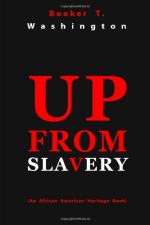While putting up our first building, which was named Porter Hall, after Mr. A.H. Porter, of Brooklyn, N.Y., who gave a generous sum toward its erection, the need for money became acute. I had given one of our creditors a promise that upon a certain day he should be paid four hundred dollars. On the morning of that day we did not have a dollar. The mail arrived at the school at ten o’clock, and in this mail there was a check sent by Miss Davidson for exactly four hundred dollars. I could relate many instances of almost the same character. This four hundred dollars was given by two ladies in Boston. Two years later, when the work at Tuskegee had grown considerably, and when we were in the midst of a season when we were so much in need of money that the future looked doubtful and gloomy, the same two Boston ladies sent us six thousand dollars. Words cannot describe our surprise, or the encouragement that the gift brought to us. Perhaps I might add here that for fourteen years these same friends have sent us six thousand dollars a year.
As soon as the plans were drawn for the new building, the students began digging out the earth where the foundations were to be laid, working after the regular classes were over. They had not fully outgrown the idea that it was hardly the proper thing for them to use their hands, since they had come there, as one of them expressed it, “to be educated, and not to work.” Gradually, though, I noted with satisfaction that a sentiment in favour of work was gaining ground. After a few weeks of hard work the foundations were ready, and a day was appointed for the laying of the corner-stone.
When it is considered that the laying of this corner-stone took place in the heart of the South, in the “Black Belt,” in the centre of that part of our country that was most devoted to slavery; that at that time slavery had been abolished only about sixteen years; that only sixteen years before no Negro could be taught from books without the teacher receiving the condemnation of the law or of public sentiment—when all this is considered, the scene that was witnessed on that spring day at Tuskegee was a remarkable one. I believe there are few places in the world where it could have taken place.
The principal address was delivered by the Hon. Waddy Thompson, the Superintendent of Education for the county. About the corner-stone were gathered the teachers, the students, their parents and friends, the county officials—who were white—and all the leading white men in that vicinity, together with many of the black men and women whom the same white people but a few years before had held a title to as property. The members of both races were anxious to exercise the privilege of placing under the corner-stone some momento.




